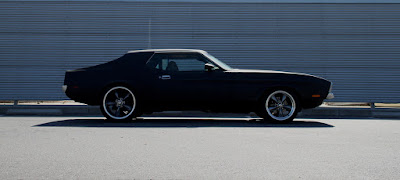 |
| photo source: happy new year 2018. com |
When I was a kid my two favorite holidays were Christmas, and my Birthday. Which of makes perfect sense of course, these were the days that I received presents!
My favorite holiday is now New Years Day. Not because I like to party, but because it is the day we get to start over again. It's the freedom of closure. What really separates the days before New Years from the days after? Nothing, except the psychological construct of closure. That was last year, and now this is the beginning of a fresh new year. Maybe we can pretend that whatever occurred last year is now wrapped up in a great big bow. In the past.
I've been producing this blog for four years. I like to think that there has been a steady increase in the quality of the site. The frequency of my posting has increased to a minimum of once a week. Over the years I like to think that the quality of my writing has also improved. I've added more photographs, many taken by myself. Many more have been downloaded from the Internet. I've tried to include the photo sources, but I know I've missed a few. I never tried to claim credit for any photo that didn't come from my own camera.
I started his blog to be the "Everyman" Chronicles. My focus has always been on the low buck, practical, hands on, do it yourself solution to your automotive problems. As someone who still has a bit more time, than money available, it is the only way that I can achieve my goals. I like to refer to myself as a bottom feeder, as I tend to look for the things that are under the radar and therefore cheap.
 |
| My Son and I working on my '22 Dodge hot rod. There have been lot's of Good Times. |
I expanded the direction of the blog to cover my automotive memories, musings and ramblings. I've shared my early experiences with cars and motorcycles and the epic motorcycle trips that I took. Luckily I had taken Instamatic photos and had written up a narrative in the photo albums that housed those snapshots. These trips were memorable experiences, but after almost forty years accurate recall of the events is quite a challenge.
I have tried to weave the threads of my memories and experiences with the current chronicle of my automotive Odyssey. Besides entertaining my readership I want to help inspire and encourage anyone out there that has contemplated the purchase of their "dream" car. It's not out of your reach.
It was a bit of a leap of faith that launched this blog. I wondered if I had a good enough story to tell and if I could communicate it effectively. I had been reading and following a couple of online forums for a couple of years. I commented and contributed regularly. This gave me my first exposure to online posting.
Curbside Classics is dedicated to documenting vintage cars that are often daily driven and found parked on the street. I've been actively commenting on this site for several years. I have toyed with the idea of contributing a story to this site for quite awhile. In fact, the post, "Color my World" was originally intended to be my first submission. I have enjoyed this site enormously over the years and I would really like to make a contribution.
The Jaguar forum has been essential to my Jaguar journey. I have maintained several threads describing the process of maintaining my three Jaguars. I have three currently active threads; one for my '89 XJS, my '97 XJ6, and my '51 Mark VII. I post frequent updates on my car's condition.
One of my favorite blogs is produced by Rhett Redelings, My Jaguar Experience. This is such a well written site. The quality of this blog has been an inspiration to me, and it inspires me to step up my game.
 |
| photo source: cartoonstock.com Is anyone listening? Do I have anything worth saying? |
The interesting thing about the blogsphere is that there are no requirements to be met before starting one. The site is free, (at least this one is!) there are no expectations as to the quality of the writing or the presentation. There is no requirement to acquire or maintain an audience. No matter how good or especially how bad the blog is, there is no one monitoring it and demanding any level of quality. So in a way there are no consequences for poor performance.
So how am I doing? I regularly check the statistics on total page views, post views, and audience. I find it amazing how someone in Asia or Europe or South America (or even Russia) can find my blog and read it. I know that blogging is old hat for many, and the action is on platforms like Facebook, Twitter or video platforms like YouTube. I guess that lots of people don't like reading anything longer than a sentence or two.
I will admit that at one time I dreamed of being a writer, but I just didn't think that I had a story worth telling. Or that I had the skills to tell it effectively. So I will write about the things that I know, however humble.
I have made a real commitment to producing this blog. I have a huge amount of projects that I need to complete to move my fleet of project and everyday cars forward. Some of this will be a bit boring, but I intend to include some more entertaining material. I hope that this New Year will bring everyone closer to realizing their dreams, or at least getting that old car running. Last Year? Look in the rear view mirror, you are leaving it behind!
 |
| Let's see what's up ahead. |


















































